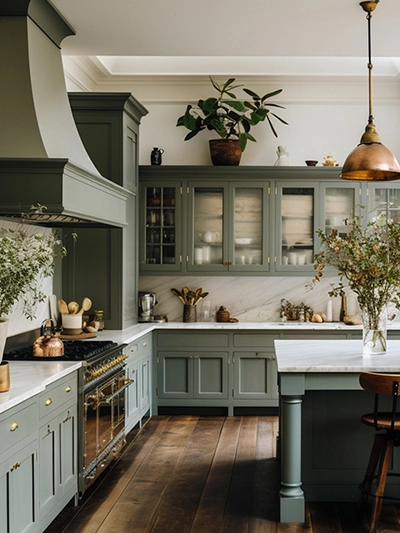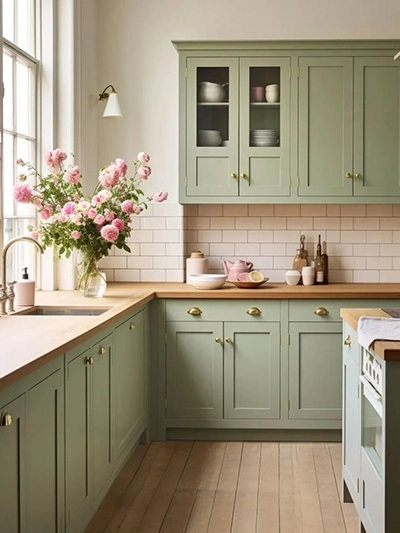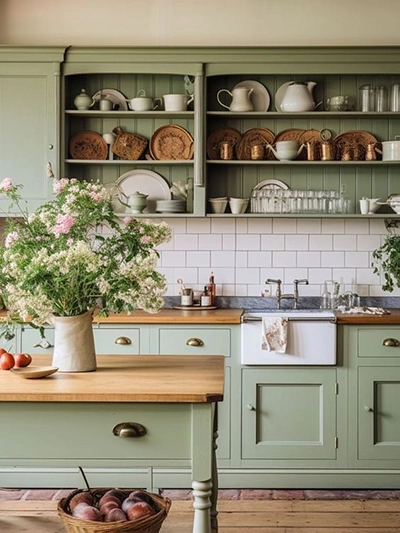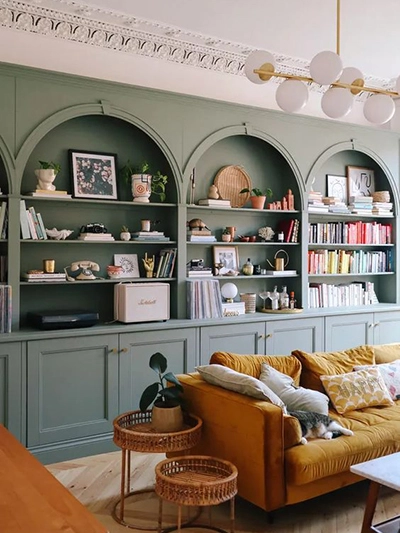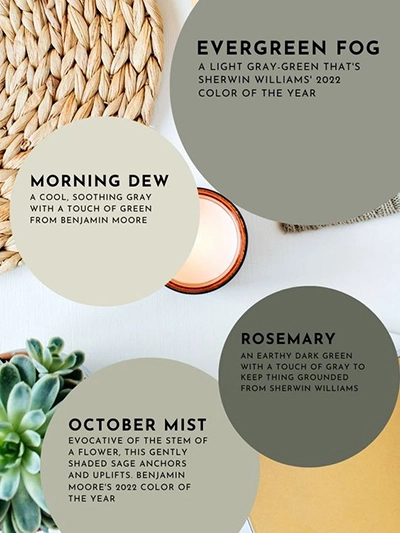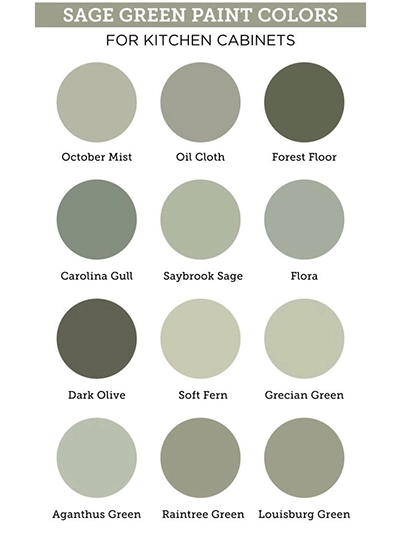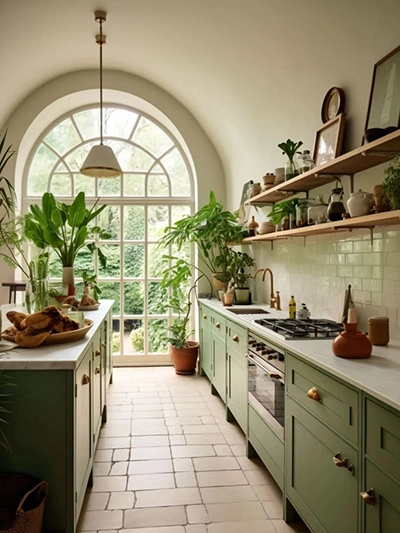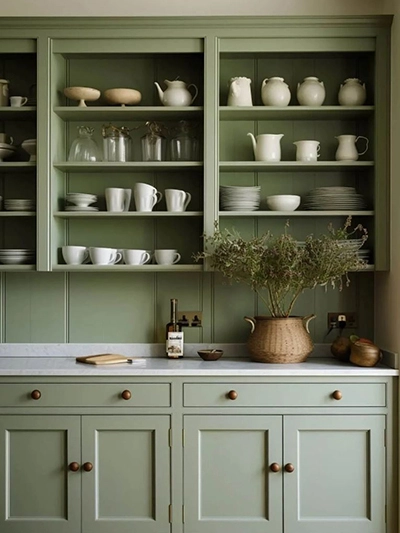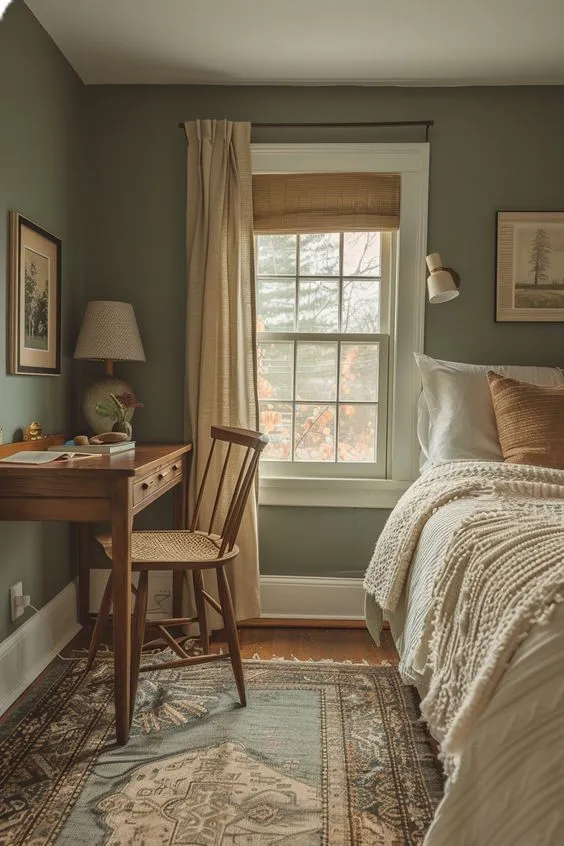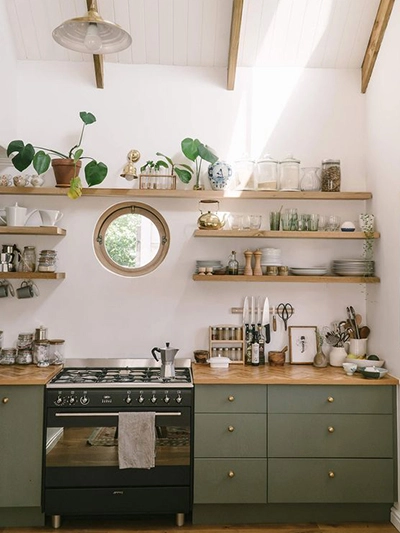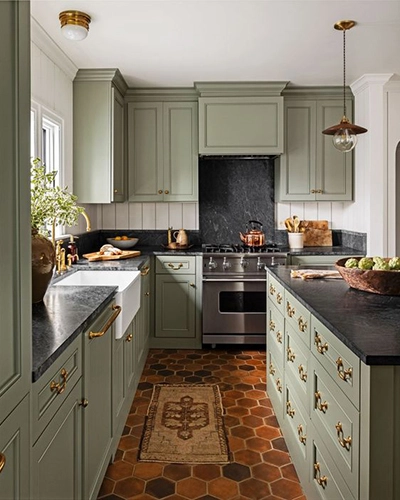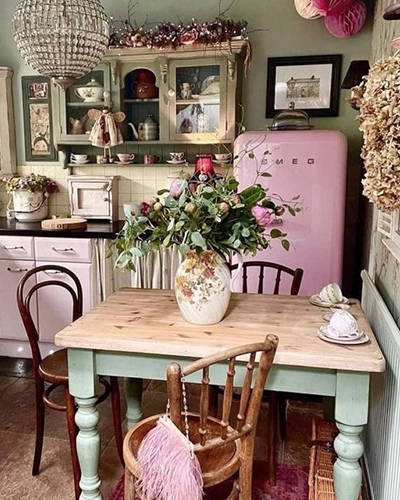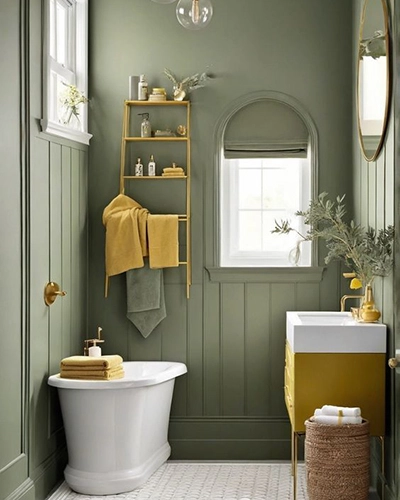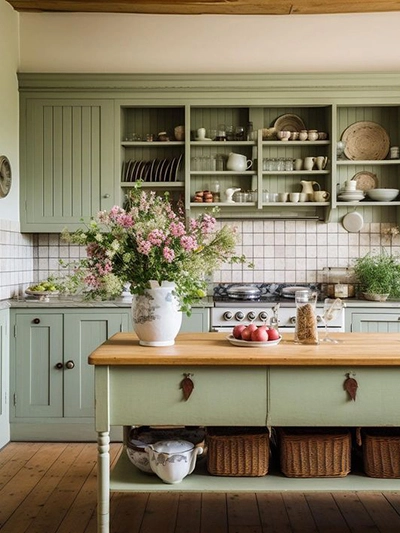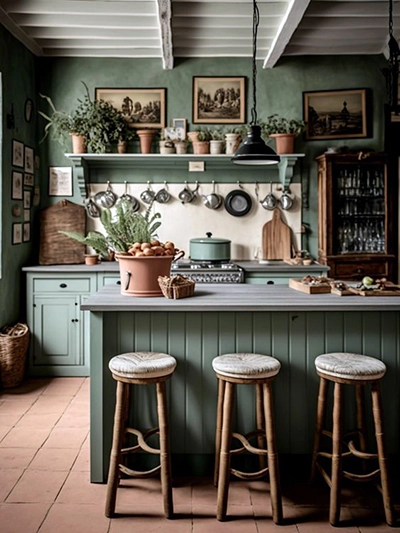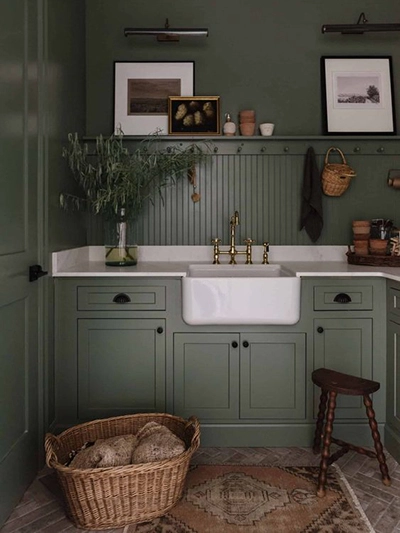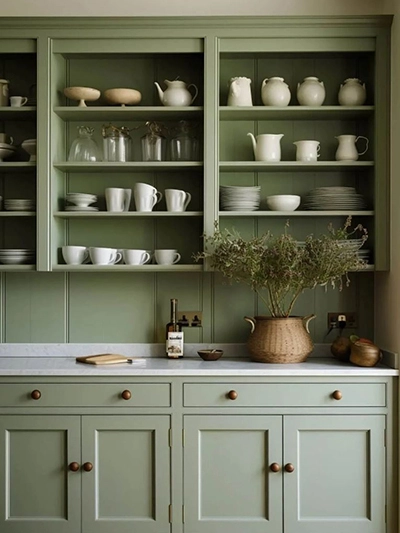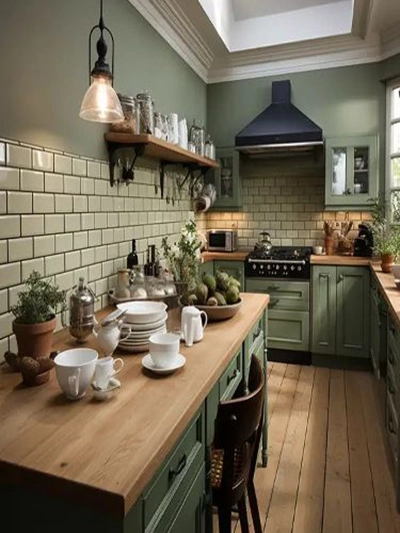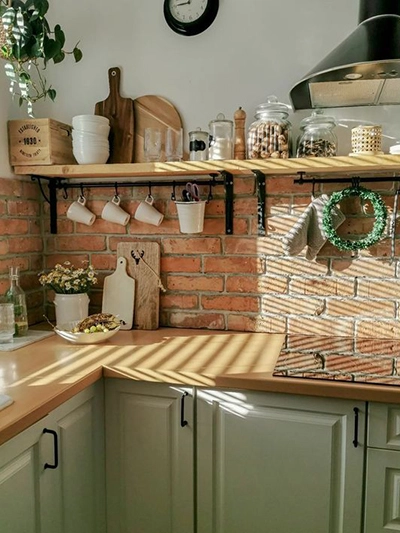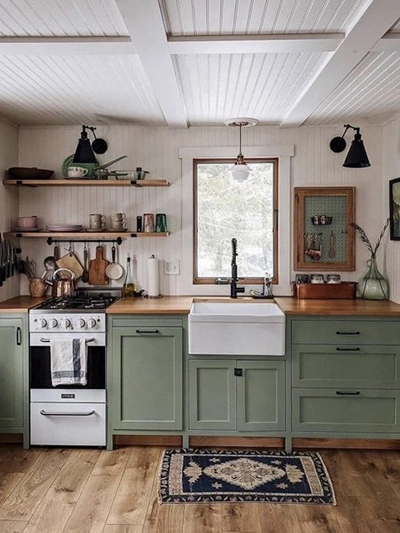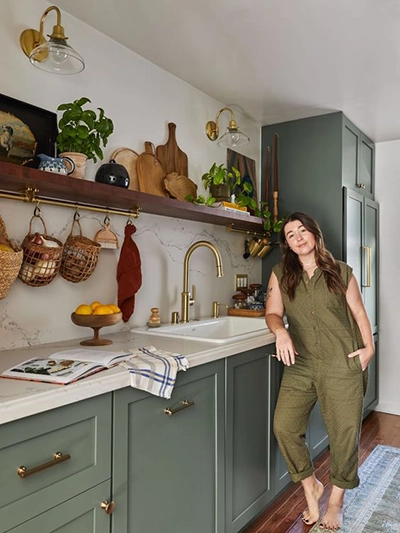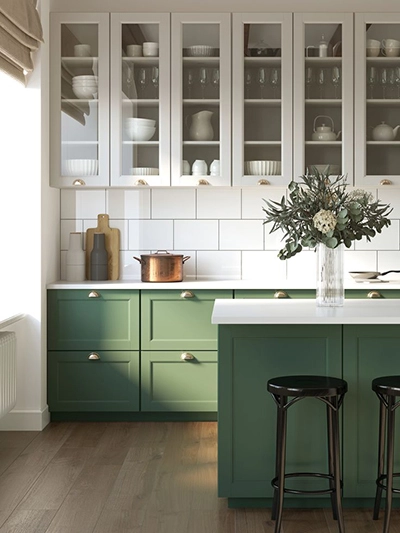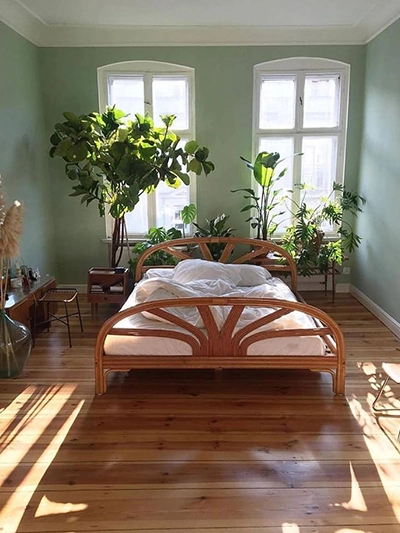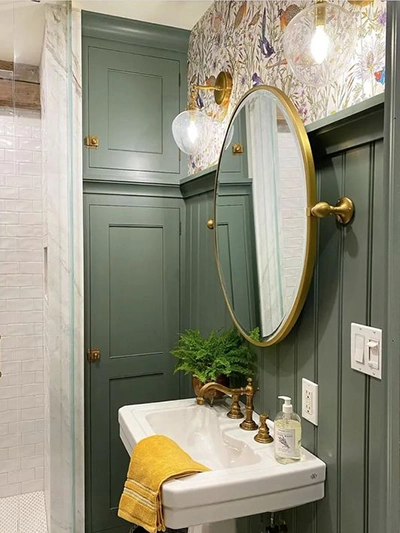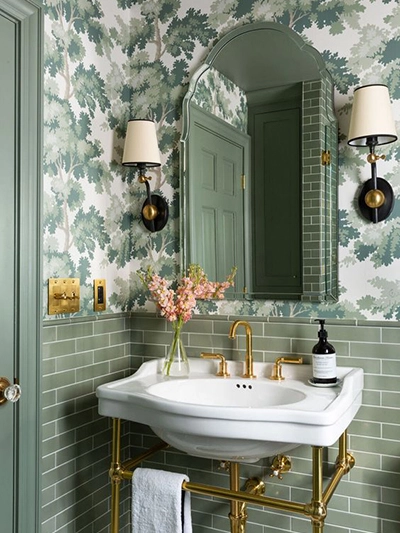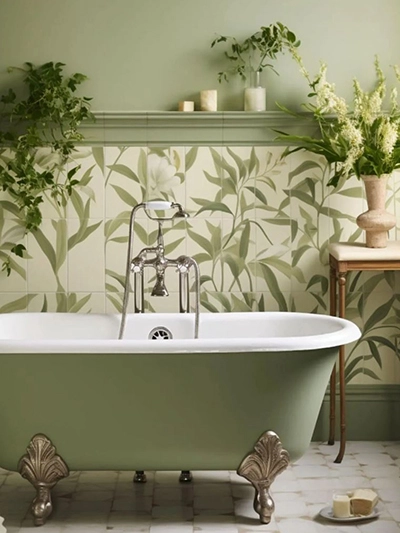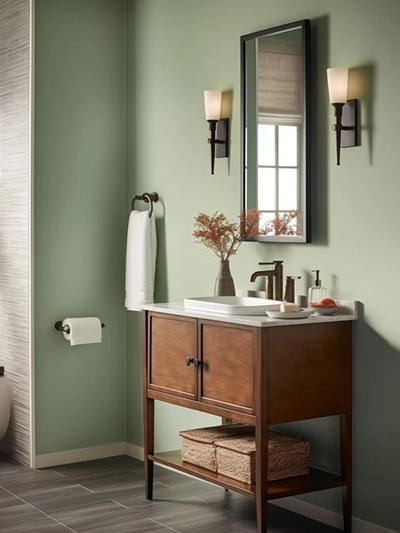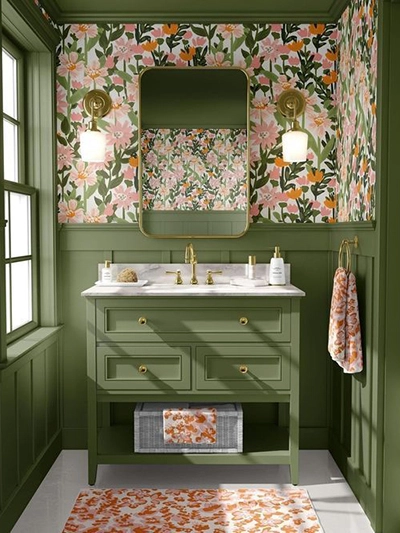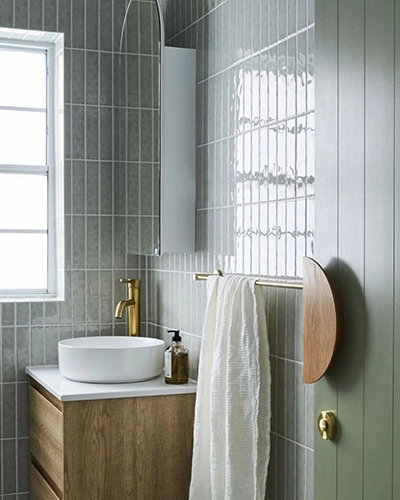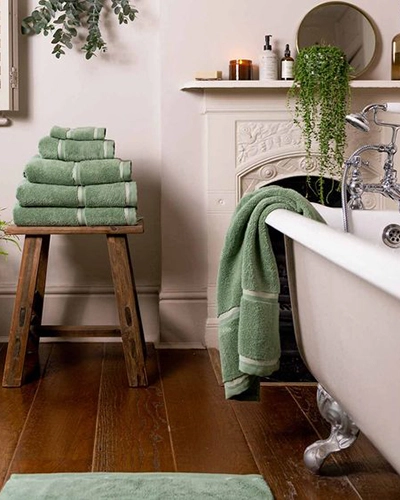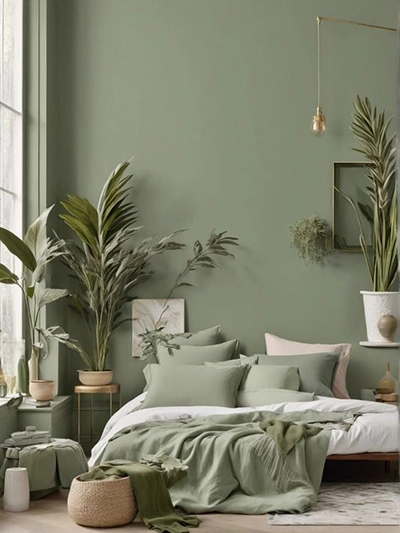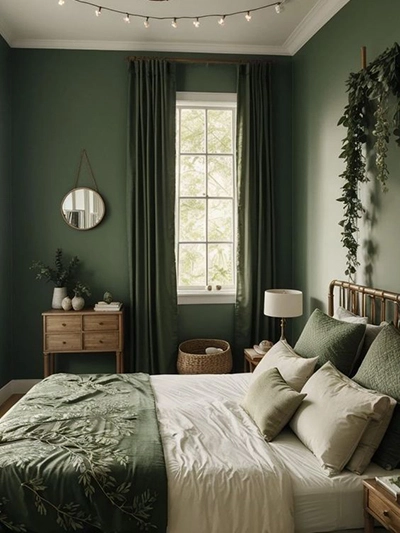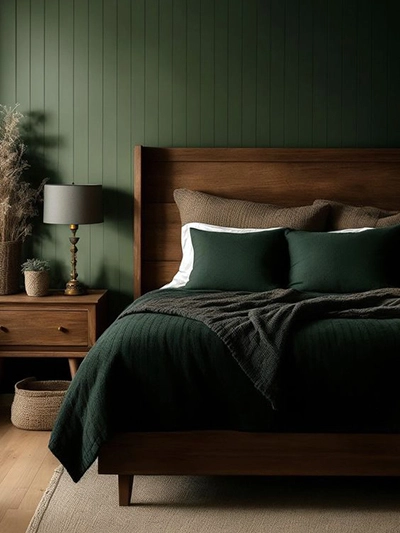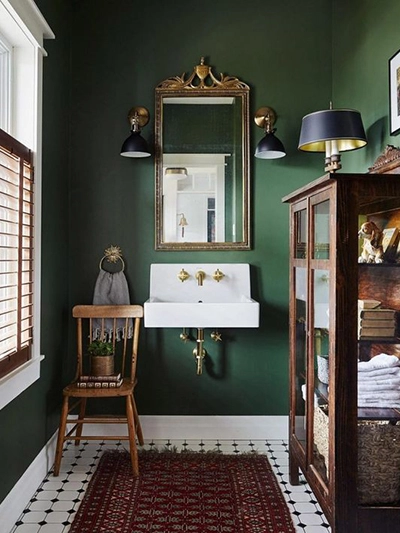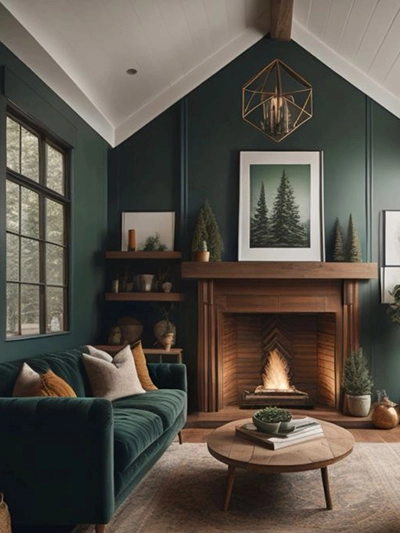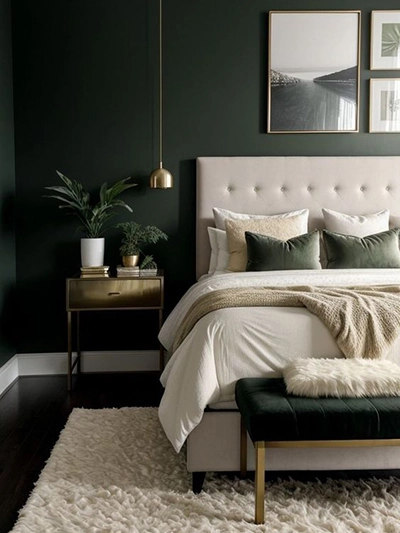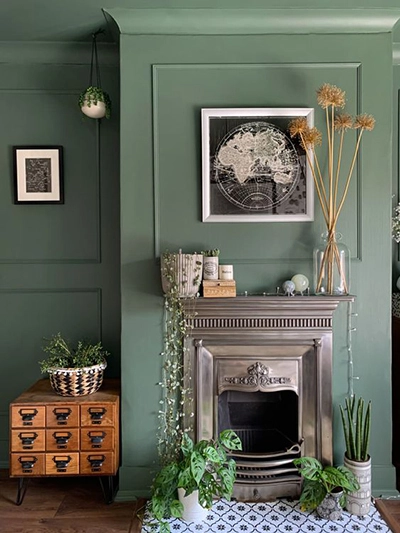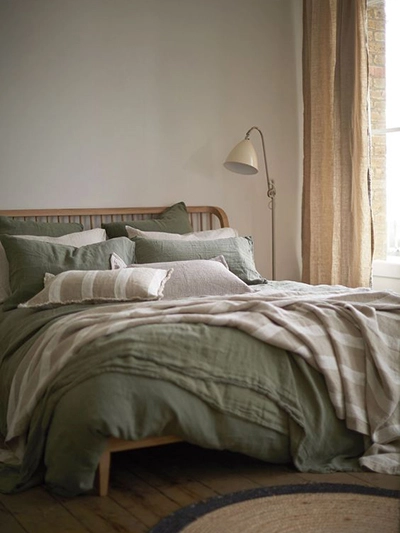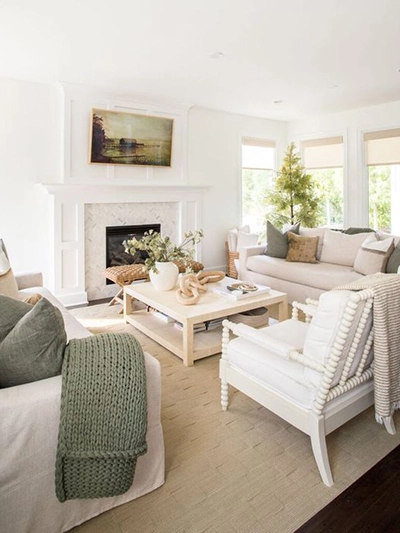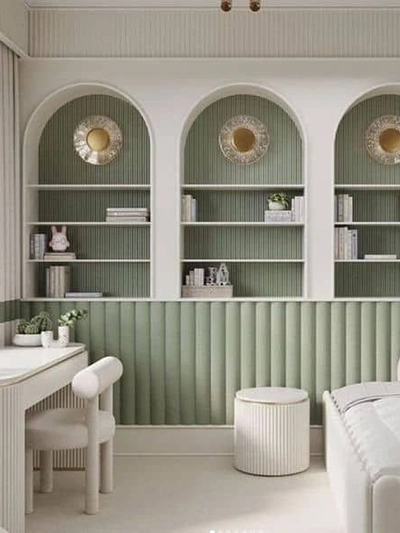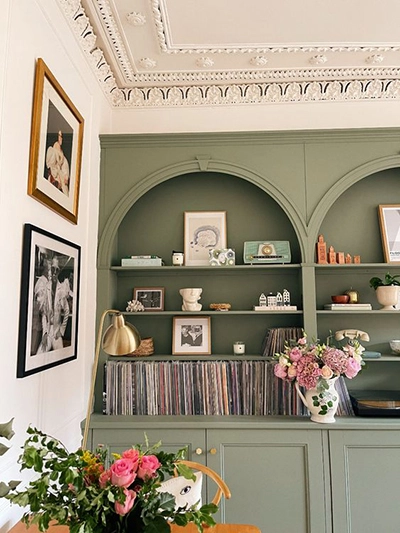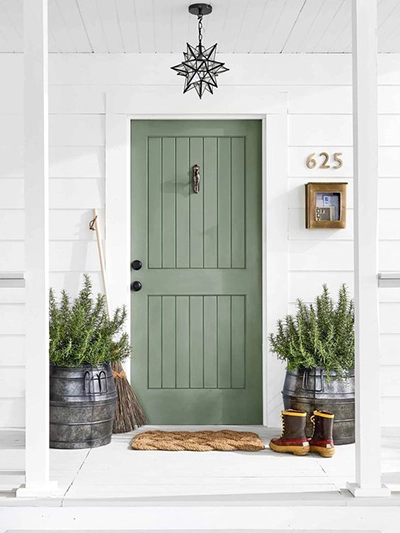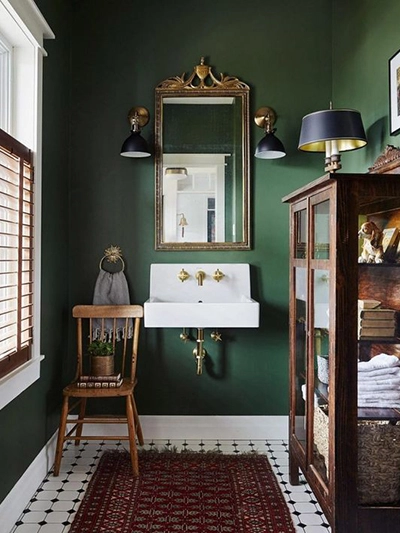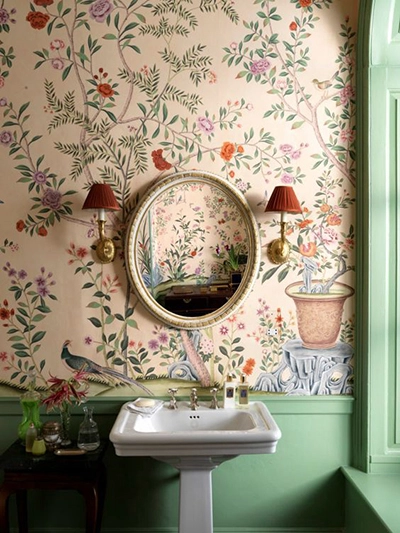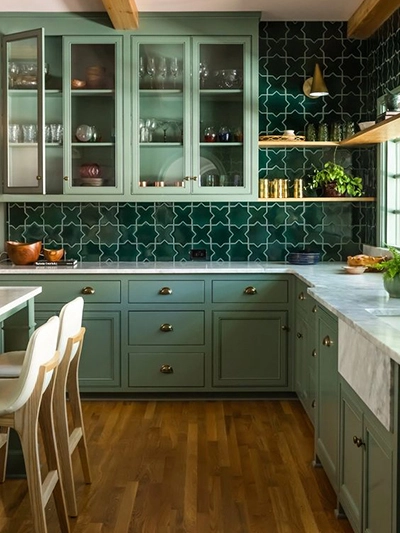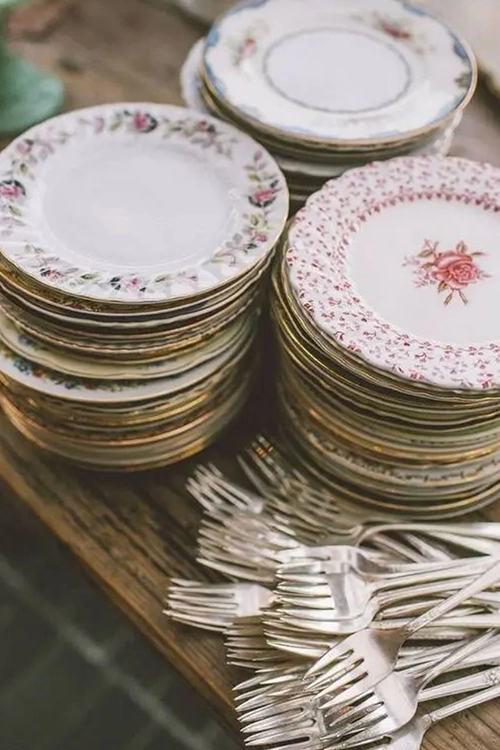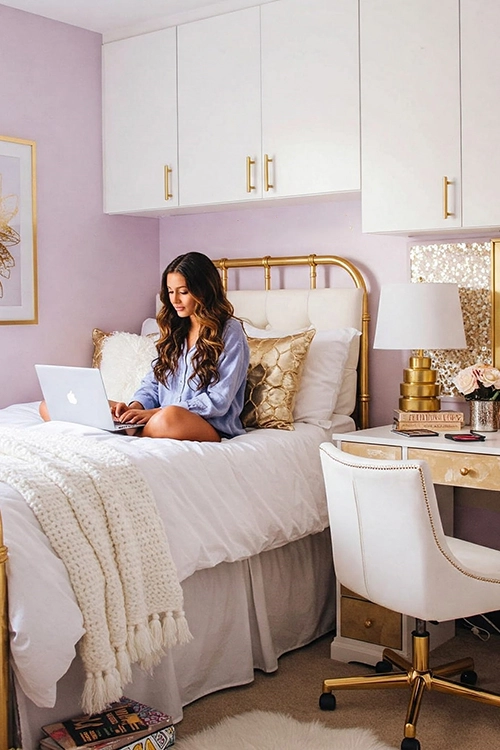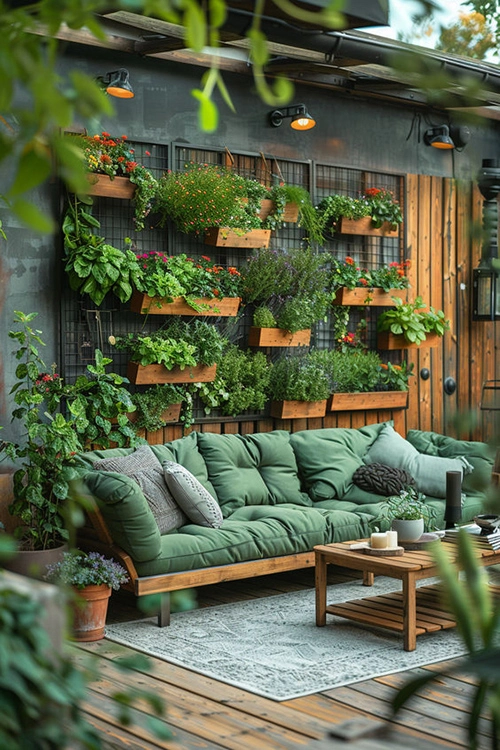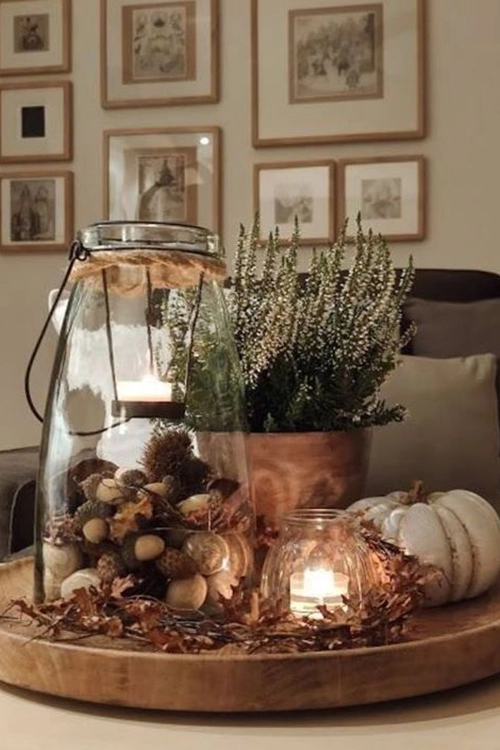Why Sage Toned Kitchens and Homes Are Here to Stay
Looking to create a calming and sophisticated atmosphere in your kitchen and home? Look no further than sage green! Dive deeper to explore why sage green spaces are more than just a passing trend.
This site contains affiliate links. I may earn a small commission at no extra cost to you.
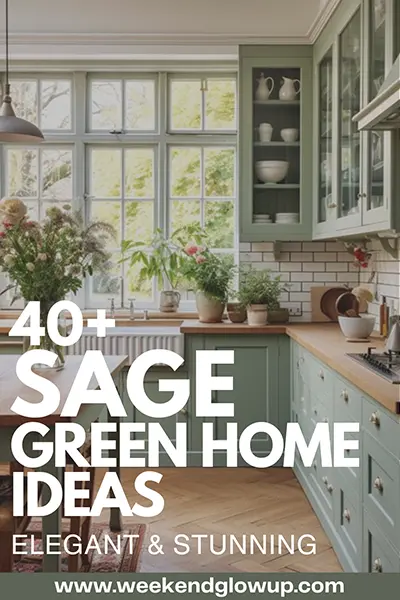
Why is sage green so popular?
Sage green, that calming and sophisticated color reminiscent of a dewy spring meadow, has taken the interior design world by storm and that is why sage-toned kitchens and homes are here to stay!
Sage green’s popularity stems from a delightful combination of factors:
Tranquility and Balance
Sage green evokes feelings of nature, promoting a sense of calm and relaxation in your home. This is especially sought-after in kitchens, where we often crave a peaceful environment to unwind after a long day.
Versatility Unmatched
Unlike bolder greens, sage acts as a chameleon. It pairs beautifully with a wide range of colors, from crisp whites and warm neutrals to pops of jewel tones. This flexibility allows you to create a design scheme that reflects your unique style.
Nature’s Touch Indoors
We’re increasingly drawn to incorporating natural elements into our living spaces. Sage green’s earthy essence fulfills this desire, fostering a connection with the outdoors without the maintenance of a live plant wall!
Sophistication with a Soft Touch
Sage green adds a touch of sophistication to a space without feeling overwhelming. It elevates the design scheme beyond basic neutrals, while remaining calming and inviting.
Timeless Appeal
Unlike faddy trends, sage green boasts a timeless quality. Its muted nature ensures it won’t feel dated quickly, making it a smart choice for long-lasting design enjoyment.
360 Degree Swivel Wicker Chair
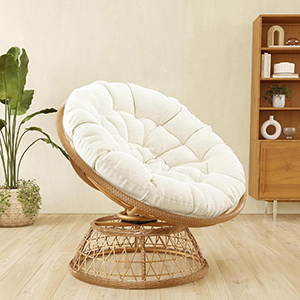
Bamboo Lantern Plug
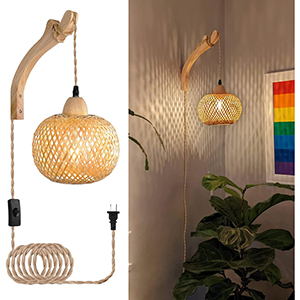
What shade of green is sage green?
Sage green isn’t a single, specific shade of green. Instead, it’s a descriptive term for a range of greenish-greys that evoke the color of the sage herb.
Here’s a breakdown of what makes up sage green:
Muted Green Base
The core color is a green that’s been toned down or “desaturated,” meaning it lacks the vibrancy of a pure green.
Gray or Yellow Undertones
Sage green often leans slightly cooler with gray undertones, or warmer with a hint of yellow. This subtle shift can drastically affect the overall feel.
Earthy Inspiration
The true essence of sage green comes from its connection to nature. Imagine the dusty green hue of dried sage leaves, with a touch of soft, smoky earthiness.
So, while there’s no single “correct” shade, sage green generally falls into the category of:
Mid-tone Greens
Not too light or dark, but occupying a comfortable middle ground.
Green-Grays
With a noticeable presence of gray alongside the green base.
Muted or Dusty Greens
Lacking the bright, fresh feel of a spring green.
If you’re looking for a specific sage green shade, it’s always best to explore paint swatches or consult with a design professional. They can help you find the perfect sage green that complements your existing decor and lighting.
ALL-IN-ONE Paint – SAGE
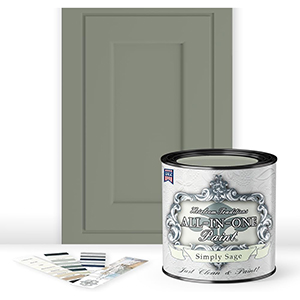
Country Chic Chalk Paint
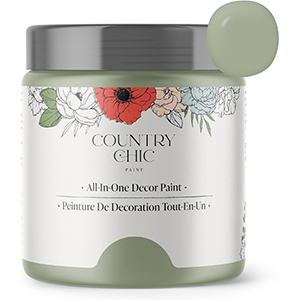
Glidden Total Interior Wall Paint
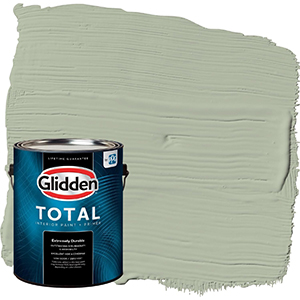
Beyond Paint – Sage
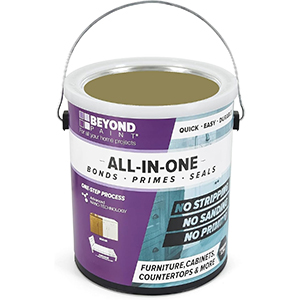
Is sage a warm or cool green?
Sage green generally leans towards the cooler side of the spectrum.
Here’s why:
Gray or Blue Undertones
As mentioned earlier, sage green often has subtle gray or blue undertones. These cooler colors inherently push the overall hue in that direction.
Earthy Inspiration
Think about cool-toned elements in nature that inspire sage green. Moss growing on rocks, dusty sage leaves, or a soft, smoky forest floor all tend to have a cooler feel.
However, there are nuances to consider:
Yellow Undertones
Some variations of sage green can have a hint of yellow, which can slightly warm up the overall impression.
Perception
Color perception can be subjective. While generally cool, someone might find a particular sage green to feel warmer depending on the lighting or surrounding colors.
Here’s a tip:
Pairing Sage Green
If you want to ensure a cool and calming atmosphere, pair your sage green with other cool colors like whites, blues, or light grays.
Ultimately, the “warmth” or “coolness” of sage green depends on the specific shade and how it interacts with other elements in your space.
What color compliments sage green?
Sage green’s versatility truly shines when it comes to complementary colors! Here’s a breakdown of some fantastic pairings, depending on the desired mood:
Calming and Earthy
Neutrals
For a timeless and serene space, pair sage green with crisp whites, airy creams, or warm beiges. This creates a clean canvas that allows the sage green to take center stage while promoting relaxation.
Browns & Taupes
Embrace the natural world by combining sage green with earthy browns and taupes. This evokes a sense of organic balance and comfort, perfect for cozy kitchens or living rooms.
A Touch of Sophistication
Black Accents
For a touch of drama and elegance, add pops of black. This creates a striking contrast that highlights the depth of sage green, perfect for creating a modern and sophisticated feel.
Charcoal Gray
A similar effect can be achieved with charcoal gray. This creates a more balanced contrast compared to black, offering a touch of modern luxury.
Unexpected Delights
Dusty Pink
For a touch of softness and femininity, consider dusty pink. This unexpected pairing creates a delightful juxtaposition, adding a touch of whimsy to a sage green space.
Mustard Yellow
Feeling bold? A muted mustard yellow can add a burst of sunshine to your sage green haven. This combination injects a touch of warmth and vibrancy, perfect for creating a cheerful and inviting atmosphere.
Cotton Hand Towels
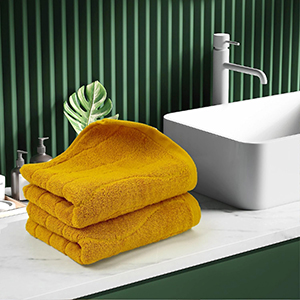
8-Piece Towel Set
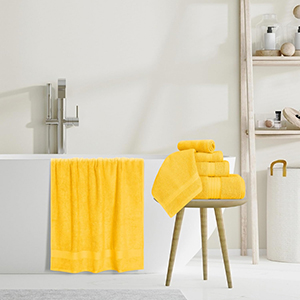
Luxury Towel Set
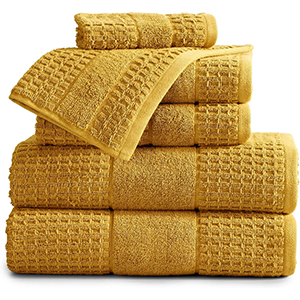
Stoneware Soap Dish
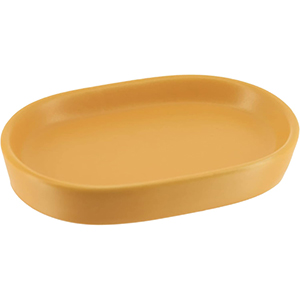
Remember
When choosing a complementary color, consider the specific shade of sage green you’re using. A cooler sage green might pair better with blues or grays, while a warmer sage green could complement browns or yellows more effectively.
Ultimately, the best way to find the perfect match is to experiment and see what speaks to you!
Is sage green a good colour for a kitchen?
Sage green walls are a fantastic pick for kitchens, no matter the size! This calming, muted green hue won’t overpower a small kitchen, making it feel more open and spacious.
In bigger kitchens, it creates a light and airy atmosphere that’s still warm and inviting.
You can go all-in with sage green on all the walls, or mix it up with another color for a kitchen accent wall.
Maybe sage green takes center stage with crisp white walls as its sidekick, or perhaps the other walls are sage green with a pop of deeper forest green for contrast.
Want to add some visual interest? Play with textures! Sage green kitchen wall tiles can add a nice touch next to neutral white or gray walls, and they can also help make the space feel bigger.
Don’t be afraid to experiment with paneling, especially if you have a larger kitchen.
Painting your panels a lovely shade of sage green creates depth and dimension, especially when paired with other textures like wood floors and brass lighting for a modern touch.
GOLD DRINKING WATER FAUCET
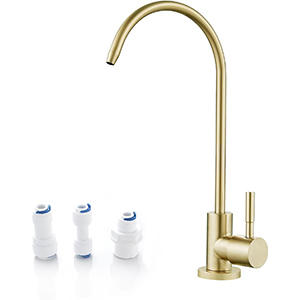
Gold Kitchen Faucet
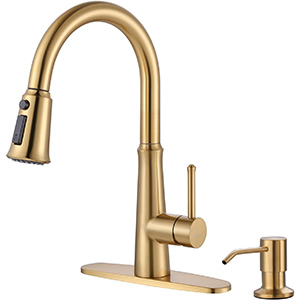
Gold Pot Rack
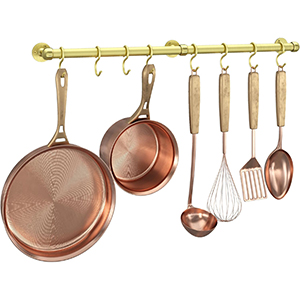
Gold Cabinet Handle

Does sage green make a room look bigger?
Sage green can definitely help a room feel more open and spacious, especially lighter shades.
Here’s why:
Light and Airy
Sage green’s muted nature reflects light well, similar to other light colors. This reflectivity creates a sense of airiness in the room, making it feel less closed-in.
Receding Effect
Lighter cooler colors like sage green tend to recede visually. Imagine staring down a long hallway painted a cool green – the walls seem to stretch back further, creating an illusion of more space.
However, a few things to consider:
Shade Matters
Darker shades of sage green won’t have the same space-expanding effect as lighter ones.
Lighting Plays a Role
For maximum impact, pair your sage green with ample natural light or bright artificial lighting. This enhances the reflective qualities and airiness of the color.
Overall, sage green, particularly lighter shades, is a great choice for creating a sense of spaciousness in a room.
Can I use sage green in a bathroom?
Sage green is a fantastic choice for a bathroom, offering a spa-like tranquility and surprising versatility.
Here’s why you should consider embracing it:
Calming Retreat
Imagine stepping into a spa-like sanctuary after a long day.
Sage green, with its connection to nature, fosters a calming and tranquil atmosphere. It’s the perfect antidote to daily stress, allowing you to unwind and truly relax in your bathroom.
A Color Chameleon
Unlike some bolder colors, sage green plays nicely with others. It pairs beautifully with a variety of elements, from crisp white fixtures to warm wood accents or pops of jewel tones.
This allows you to create a bathroom that reflects your unique personality.
Timeless Allure
Unlike fleeting trends, sage green boasts enduring charm.
Its muted nature ensures it won’t feel dated quickly, so you can enjoy your tranquil bathroom oasis for years to come.
Spacious Illusion
Lighter shades of sage green can make a smaller bathroom feel more open and airy.
The reflective nature of the color creates a sense of light and space, especially when complemented by good lighting.
Here are some ways to incorporate sage green into your bathroom design:
Sage Green Walls
This is a classic choice, creating a calming and serene backdrop for your bathroom.
Sage Green Vanity
A sage green vanity adds a touch of sophistication and can be a beautiful focal point.
Sage Green Tile
Sage green tiles, on the floor, shower walls, or even a backsplash, can add a touch of color and visual interest.
Sage Green Accessories
Towels, bath mats, and other bathroom accessories in sage green can tie the look together and add pops of color.
Sage Towel Set
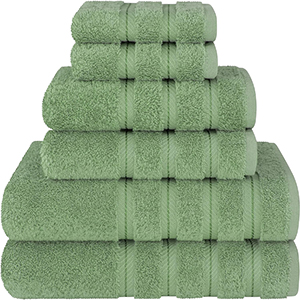
Sage Shower curtain
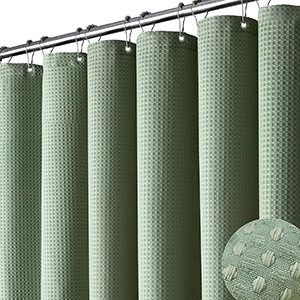
Sage Bathroom Rugs
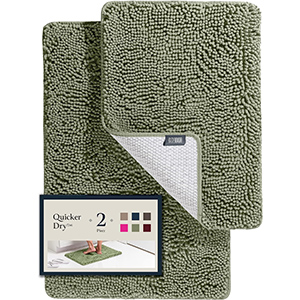
Sage Soap Dispenser
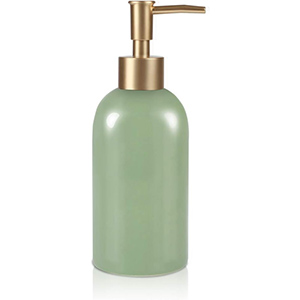
Remember, consider the size and natural light of your bathroom when choosing a shade of sage green.
A lighter shade might be more suitable for a smaller space, while a bolder shade could work well in a larger bathroom with ample natural light.
Is sage green a good bedroom color?
You bet! Sage green is a fantastic choice for a bedroom, offering a multitude of benefits that create a restful and stylish retreat.
Here’s why you might love it:
Calming Retreat
Sage green’s connection to nature evokes feelings of peace and serenity. This is ideal for a bedroom, where you want to unwind and drift off to sleep easily. This is ideal for a bedroom, where you want to unwind and drift off to sleep easily.
Restful on the Eyes
The muted nature of sage green is easy on the eyes, especially in a space meant for relaxation. It creates a calming and balanced feel, promoting a good night’s sleep.
How to Incorporate Sage Green into Your Home
Paint Your Walls
For those seeking a gentle transition, lighter shades of sage green offer a subtle and sophisticated touch.
This approach creates an atmosphere of serenity, providing a backdrop that is both calming and visually expansive, making your living spaces feel inviting and airy.
On the opposite end of the spectrum, darker shades of sage green make a bold and dramatic statement.
Deep, rich tones evoke a sense of coziness and intimacy, transforming your walls into a canvas that exudes warmth.
Darker sage green walls can be particularly striking in rooms with ample natural light, creating a harmonious balance between boldness and natural illumination.
Pairing sage green walls with complementary furnishings and decor further enhances the overall aesthetic harmony of your space.
White or cream-colored furniture, natural wood accents, and touches of metallic finishes can seamlessly integrate with sage green, creating a cohesive and sophisticated atmosphere.
This combination not only showcases the versatility of sage green but also allows other design elements to shine.
Use Sage Green Accents
Sage green accents are a delightful and versatile choice that allows you to infuse your home with the calming and timeless allure of this sophisticated hue.
From throw pillows to artwork, these carefully curated details weave a tapestry of tranquility and style throughout your living spaces.
Green Fleece Throw
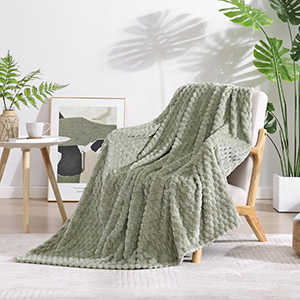
Sage green wall art
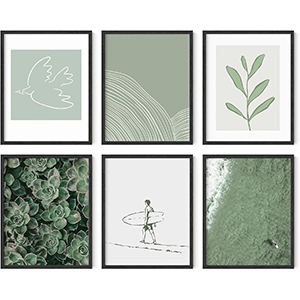
Sage Blackout Curtains
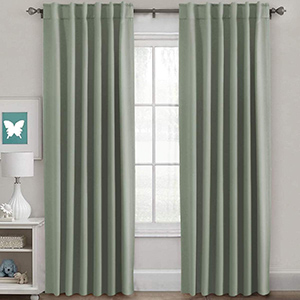
Sage Cushion Covers
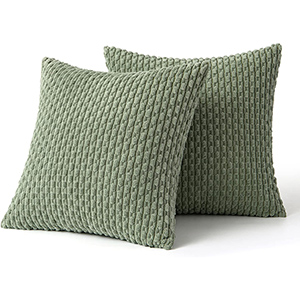
Sage Toned Botanical Art
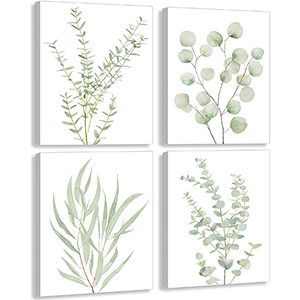
Sage Cushion Covers
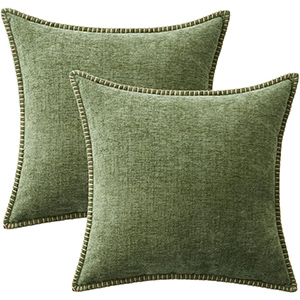
Sage Queen Set
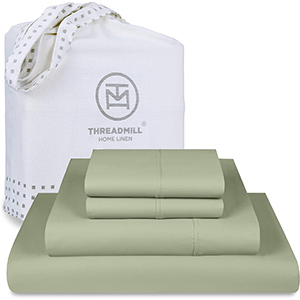
Sage Lamps
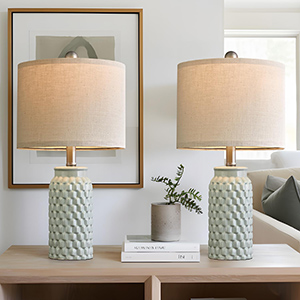
Incorporate Natural Elements
In the pursuit of a home that echoes the serenity of the outdoors, few design choices are as effective as incorporating natural elements. With its innate connection to the earth, sage green, seamlessly pairs with materials like wood, stone, and wicker, creating a space that exudes relaxation and organic charm.
Get Creative
Think outside the box! Sage green can be used in unexpected ways, such as on kitchen cabinets, bathroom tiles, or even your front door.
Tips for Using Sage Green
Start Small
When using sage green in a small space, be sure to choose a lighter shade to avoid making the room feel even smaller.
If you’re not sure how much sage green to use, start with a few small accents and add more later if you want.
I would also like to add that sage green is a great color for sustainable homes.
Sage green is often associated with nature, and using natural materials in your home can help to reduce your environmental impact.
Additionally, sage green is a very calming color, which can help to reduce stress and improve your overall well-being.
Sage green’s reign as a popular color goes far beyond a fleeting trend.
From kitchens and bathrooms to bedrooms, this earthy hue offers a winning combination of style, function, and timeless appeal. Its calming nature fosters peaceful environments, while its versatility allows for endless design possibilities.
So, if you’re looking to create a space that’s both beautiful and serene, consider embracing the enduring charm of sage green.

